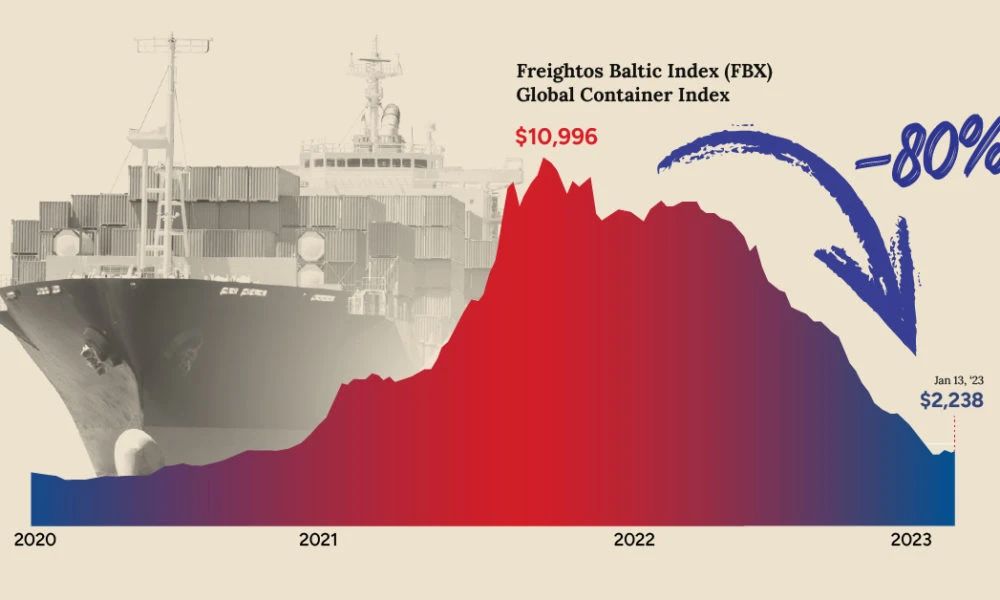According to data released by the Baltic Freight Index (FBX), the international container freight index has dropped from a high of $10996 at the end of 2021 to $2238 in January of this year, a full 80% decrease!
The above figure shows a comparison between the peak freight rates of various major routes over the past 90 days and the freight rates in January 2023, with freight rates from East Asia to the West and East of the United States both falling by more than 50%.
Why is the sea freight index important?
What is the problem with the sharp drop in sea freight rates?
What are the inspirations brought by the changes in the index to traditional foreign trade and cross-border e-commerce in our sports and fitness categories?
01
Most of the global trade is achieved through sea freight for value transmission, and the skyrocketing freight rates in the past few years have caused catastrophic damage to the global economy.
According to a 30 year study by the International Monetary Fund (IMF) covering 143 countries and regions, the impact of rising sea freight rates on global inflation is enormous. When sea freight rates double, the inflation rate will increase by 0.7 percentage points.
Among them, countries and regions that mainly rely on imports and have a high degree of global supply chain integration will have a stronger feeling of inflation caused by rising sea freight rates.
02
The sharp drop in sea freight rates indicates at least two issues.
Firstly, market demand has decreased.
In the past three years, due to the ravages of the epidemic and differences in control measures, some goods (such as home fitness, office work, games, etc.) have shown a situation of oversupply. In order to meet the needs of consumers and not be overtaken by competitors, merchants rush to stock up in advance. This is the main reason for the rise in prices and shipping costs, while also excessively consuming the existing market demand in advance. At present, there is still inventory in the market and it is in the final period of clearance.
Secondly, price (or cost) is no longer the only factor determining sales volume.
In theory, the transportation costs of overseas buyers or cross-border e-commerce sellers are falling, which seems to be good, but in fact, because of the “less monk and more Congee”, and the pessimistic attitude of consumers towards income expectations, the market liquidity of goods and commodities is greatly reduced, and unsalable phenomena occur from time to time.
03
Shipping costs are neither rising nor falling. What else can we do for exporting fitness products?
First, sports and fitness products are not just needed products, but also not a sunset industry. The difficulties are only temporary. As long as we persist in developing products that meet consumer needs, and use appropriate channels for promotion and sales, recovery will be sooner or later.
Secondly, different product development strategies and marketing channels should be adopted for manufacturers, brand merchants, e-commerce sellers, and trading companies, fully utilizing the new model of “online+offline” for planning and implementation.
Thirdly, with the opening of the country’s borders, it is foreseeable that in the near future, the scene of crowds at past exhibitions will definitely reappear. Industry exhibition companies and associations should provide more support for precise docking between enterprises and buyers.
Post time: May-15-2023



